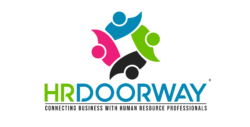I wrote recently about how to lead through this very unique period in society, colloquially known as the “Great Resignation.” As a refresher, Anthony Klotz, a professor at Texas A&M University, coined this phrase. He believed there was going to be a wave of workers quitting their jobs across many industries. I’ve seen that many think this term is an exaggeration, but to me, it’s plainly obvious that the “Great Resignation” is a real thing.
At my company, a human capital management software company, we looked closely at more than 120,000 termination events from 2019 to 2021 for our study on voluntary termination. It became clear that the changes in employee behavior as it relates to termination have changed dramatically.For example, we found that this year, employees have voluntarily left their jobs, on average, 10.6% more than in 2019. Another key finding was that the likelihood of workers who identify as Asian or Hispanic/Latino to voluntarily leave their jobs has increased as well.
A recent survey by Bankrate also speaks to trends happening in the labor market today. The consumer financial services company found that 55% of Americans who are in the workforce said they are likely to look for a new job over the next 12 months. “Even more surprising, some 28% of working Americans who currently say they’re not looking for a new job are still expecting to search for a different position at some point in the next year,” the company reported.
So with that said, here are five things to consider as you contemplate how to navigate these challenging waters.
1. Remember that with the Great Resignation, candidate pools are more robust.
Because so many people are open to changing jobs, they’re paying more attention than ever to openings on your careers page, reach outs by your recruiters and prospecting by headhunters. As a result, you’re likely going to see better candidate flow than ever before. It has never been more important to make sure your website has its career page front and center, and that you’ve given your openings the best possible visibility.
If your digital marketing team isn’t actively involved in your job posting activities, change that — today. Where the jobs are posted, how you spend to drive visibility and alignment with your brand are all essential. Spending recruiting dollars promoting your job posting for the highest visibility (especially for your hardest-to-fill positions) is important. Make sure your recruiting team has the necessary expertise to do this well.
2. Double down on employee referral programs.
It’s still the case that the best source of candidates is employee referrals. Create compelling referral programs that are easy to administer. Make it easy to flag a candidate as a referral (most applicant tracking systems do this well), and tie incentives to your most difficult-to-fill positions. It may feel counterintuitive, but offering a $10,000 referral bonus for a position that, if you sent to a headhunter, will carry a cost four to six times as much, makes perfect sense. Also, watching the flow of candidates from referrals is a great way to gauge employee engagement. If your employees aren’t referring people, there’s a reason.
3. Don’t be vague about heading back to the office (especially if you’re not going to mandate it).
Candidates who have decided they don’t want to return to the office on a full-time basis are watching carefully to see if their employer is going to mandate it. If they do, some employees may choose to hit the job boards. If you know you’re not going to require that people come back to the office, tell them now. If you don’t, you might lose them to a company that is already promising a remote-first office environment.
Lastly, as a CEO, I believe if you think you can go back to the way things were and require everyone to be in the office, you’re fooling yourself. From my perspective, employers of choice in 2022 will offer a hybrid, if not a remote-first, approach.
4. Recruit at warp speed, and be prepared to pay.
Thanks to the Great Resignation, fantastic candidates are going to show up in your database who previously didn’t bother applying for open positions. When that happens, time is of the essence. My team recently sourced a candidate for a very hard-to-fill position (via an employee referral) and took that candidate through the entire recruiting process (without cutting corners) in 72 hours. We hired the candidate before they had a chance to even interview anywhere else.
While it’s been true for years, it’s never been more important for hiring managers to make interviewing candidates a No. 1 priority. CEOs need to make it perfectly clear that interviewing isn’t a necessary evil; it’s a strategic priority, and you have to hold everyone accountable to being faster and more effective than your competition.
Anyone who has participated in the pandemic real estate market knows it’s a seller’s market. The same is true of the hiring climate. Sticking to the processes, policies and approaches that you used in 2019 will leave you with dozens of open positions and a real loss of organizational agility (and probably revenue).
5. Embrace change.
The world has changed thanks to Covid-19. The Great Resignation is going to represent a major shift in career behaviors in the short-term and, in combination with societal changes, will impact the world of work in a material way.
If you’re going to lead your organization through this transition, you need to think differently, lead differently and be open to fundamentally different ways of doing things.

